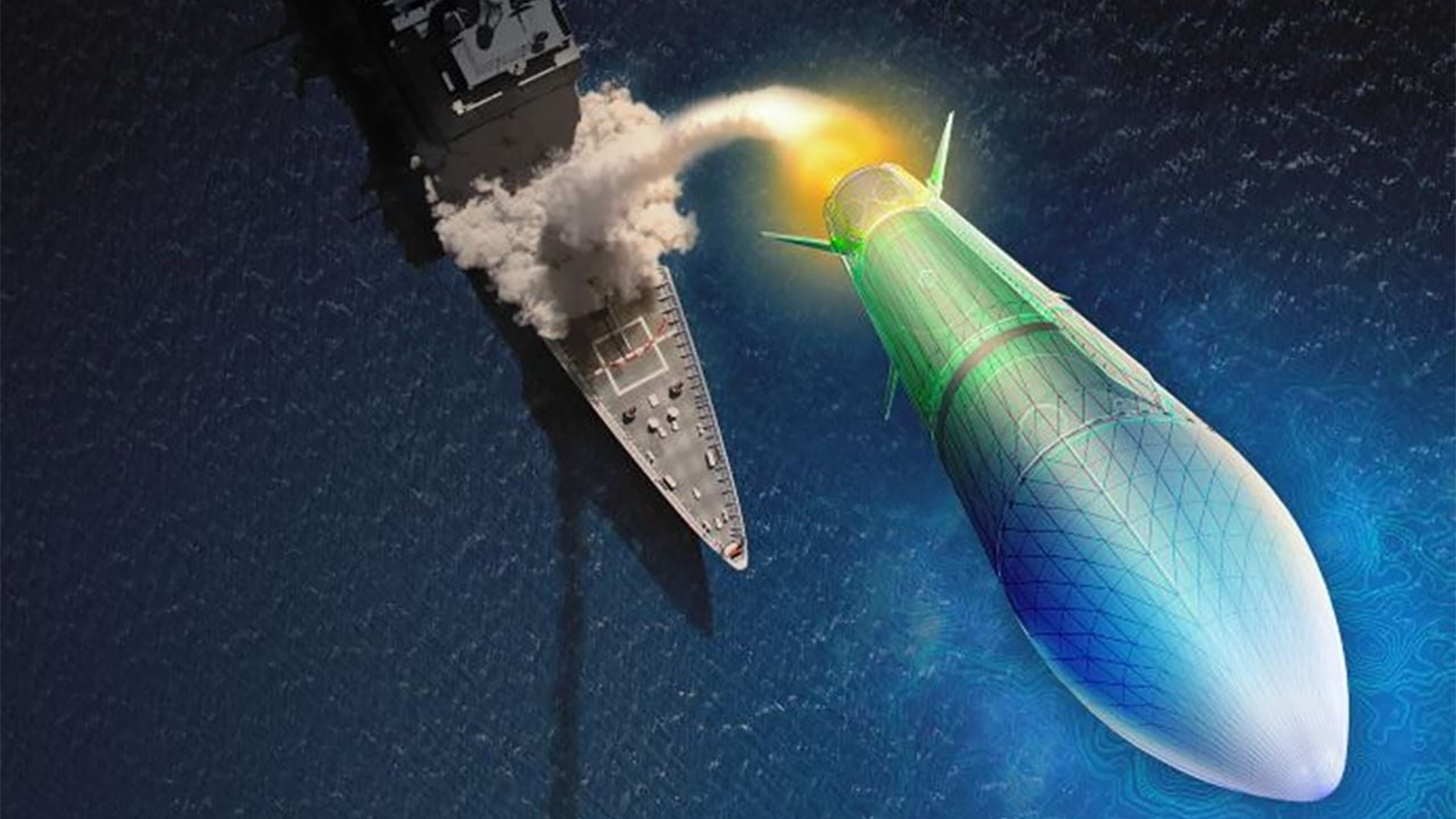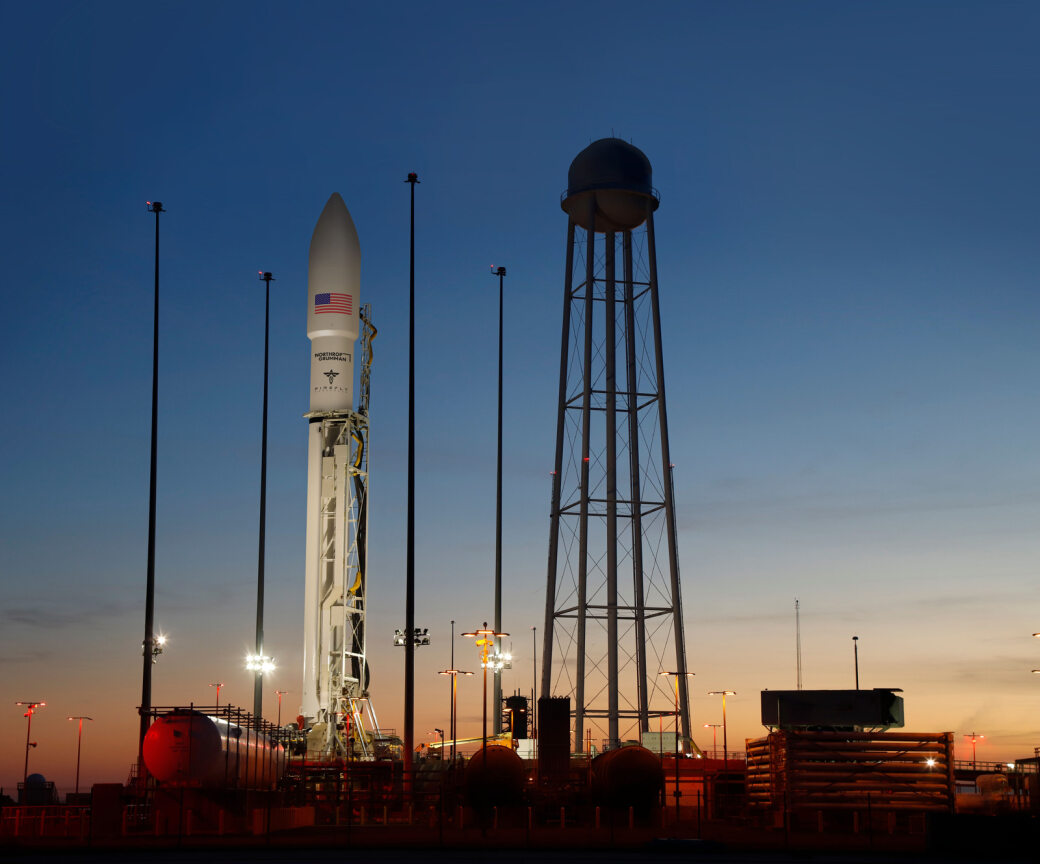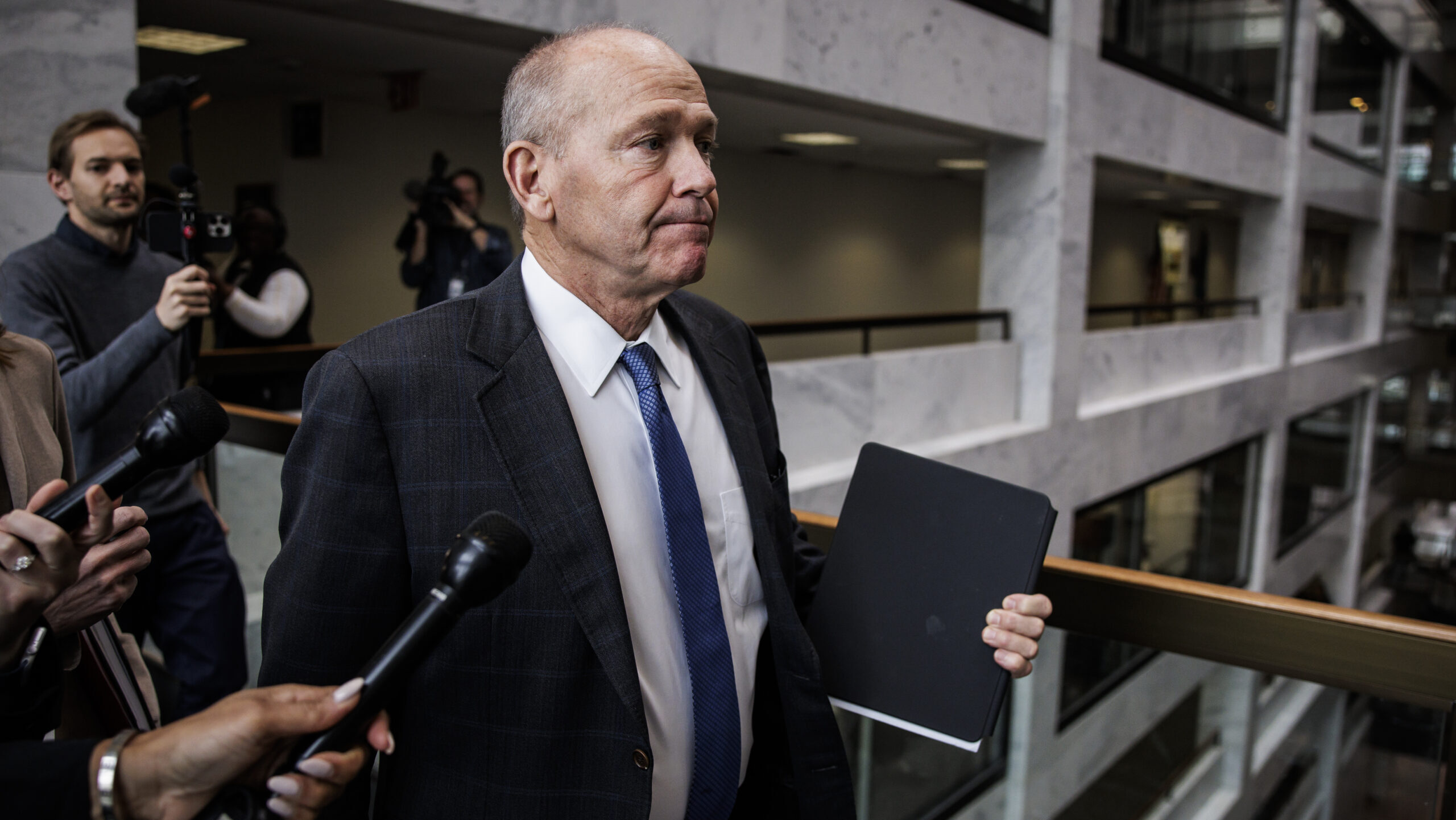
Raytheon Missiles Defense is one of two firms selected by the Missile Defense Agency as one of the companies to develop and test the Glide Phase Interceptor, the first system specifically designed to defeat hypersonic threats. (Raytheon graphic)
WASHINGTON — The House Armed Services strategic forces subcommittee in its fiscal 2024 draft defense policy bill would speed delivery of a new Missile Defense Agency interceptor specifically designed to shoot down hypersonic missiles. The legislation would also demand better Space Force integration with commercial industry — including demanding routine integration of commercial space monitoring data and improved sharing of threats with corporate partners.
In addition, the draft bill calls for a regular review of the classification level of major space acquisition programs, in the face of widespread concerns that the heavy blanket of secrecy that surrounds national security space is stifling cooperation with industry and allies, as well as harming the US military’s ability to deter adversaries in space.
The draft National Defense Authorization Act (NDAA) language released today by the subcommittee covers Space Force, Missile Defense Agency and both Defense and Energy Department nuclear weapons activities.
Missile Defense And Nuclear Weapons
Section 1653 of the draft would require the Missile Defense Agency to develop an implementation plan that would ensure initial operational capability of the new Glide Phase Interceptor, aimed at shooting down hypersonic missiles before they begin their rapid maneuvering through the Earth’s atmosphere, not later than Dec. 31, 2029. Under the agency’s current schedule for the new interceptor, budgeted at $209 million for “early risk reduction” in its FY24 request, initial operational capability wouldn’t be achieve until around 2035.
Lawmakers also want the Air Force to establish an “integrated master schedule” for the Sentinel intercontinental ballistic missile designed to replace the aging Minuteman 3 ICBM fleet, as well as to brief Congress every quarter on the program’s progress and, if a delay happens in the interim, to report it within 30 days. DoD in March was forced to rejigger the $96 billion effort to minimize schedule overruns caused by supply chain and workforce issues at prime contractor Northrop Grumman.
Further, the draft NDAA would require DoD to establish nuclear command, control and communications (NC3) efforts as “major force program,” in order “to aggregate and better track sustainment and modernization efforts across the NC3 enterprise.”
Space Force — Commercial SSA, Classification, Multiple Reporting Requirements
Section 1604 of the draft NDAA would require the Assistant Secretary of the Air Force for Space Acquisition and Integration Frank Calvelli, in consultation with Chief of Space Operations Gen. Chance Saltzman, “to establish a process to identify and evaluate commercial space situational awareness capabilities.” In particular, it mandates a plan to integrate the Unified Data Library — currently a separate database for collecting commercial observations of space objects — into Space Force operational systems.
Space Systems Command, the service’s primary acquisition shop, has been struggling for years to update its computer systems for collecting and processing space monitoring data to more rapidly provide space domain awareness information to combatant commanders, as well as close gaps in tracking capabilities including by relying on the ever-growing wealth of commercially provided data.
Lawmakers also are worried that commercial companies contracting with DoD “are vulnerable to physical and cyber threats,” noting that US Space Command “has has established the commercial integration cell to aid in the integration and protection of United States satellites and to build awareness of threats.” Therefore, the draft NDAA’s Section 1603 mandates that Calvelli and SPACECOM head Gen. Jim Dickinson jointly “develop a plan to expand existing threat-sharing arrangements with commercial space operators,” and report to Congress on that plan within 180 days.
Further, the draft NDAA in Section 1601 mandates that acquisition managers routinely re-asses whether the classification levels assigned to “major” space programs are “appropriate” when they hit Milestone B, the point at which a decision is made for the program to enter the engineering, manufacturing and development phase. If things have changed, security levels can then be updated. Major programs are those that top $525 million research, development, test and evaluation or for procurement, of more than $3.065 billion, both calculated in FY20 constant dollars.
The HASC subcommittee also would require a bevy of reports and briefings from senior DoD officials on space issues, including on: the National Space Test and Training Complex; Navigation Technology Satellite-3; Space Development Agency requirements for its next planned phase, called Tranche 2, of satellite deployment; and the use of small businesses by the Space Force.
The full House Armed Services Committee is set to markup the draft NDAA on June 21. It remains unclear when the Senate counterpart will vote on the bill, which then goes to conference committee for the two sides of Capitol Hill to iron out their differences.












